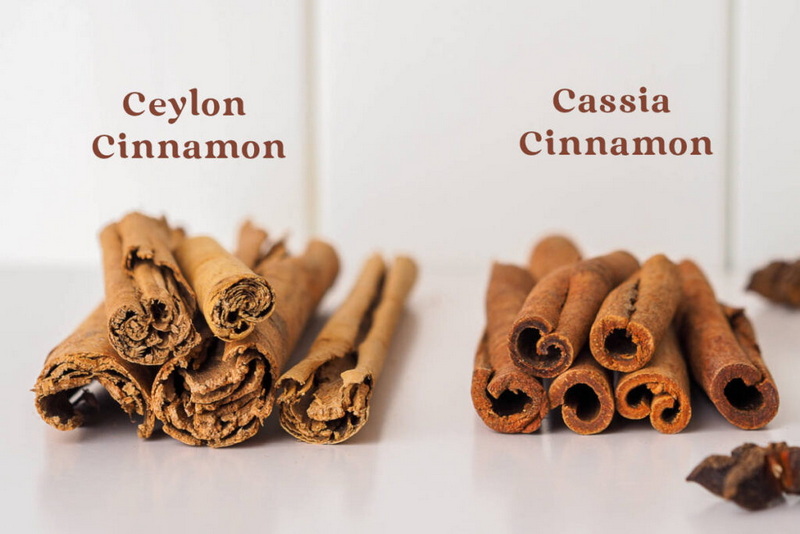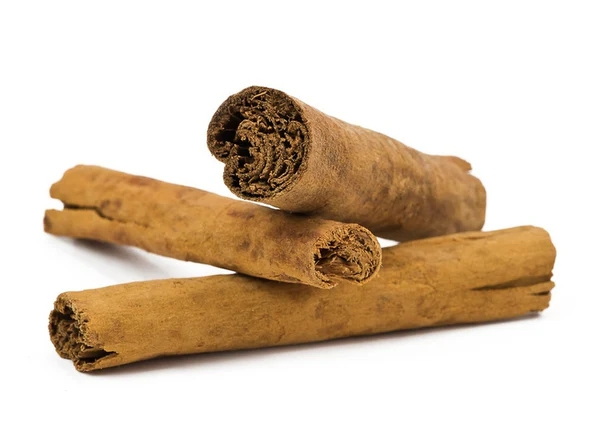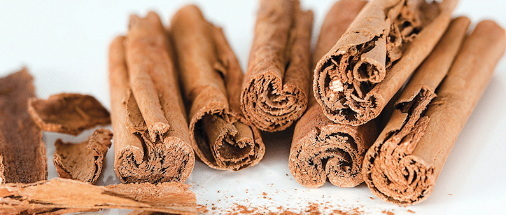Content Menu
● Introduction to Cinnamon
>> Cinnamon Bark
>> Cinnamon Extract
● Preparation Methods
>> Cinnamon Bark Preparation
>> Cinnamon Extract Preparation
● Uses and Applications
>> Cinnamon Bark Uses
>> Cinnamon Extract Uses
● Health Benefits
● Cinnamon Bark vs Cinnamon Extract: Comparison
● Cosmetics and Other Applications
● Antimicrobial Properties
● Nutritional Differences
● Environmental Impact
● Cultural Significance
● Conclusion
● Frequently Asked Questions
>> 1. What is the main difference between Ceylon and cassia cinnamon?
>> 2. How is cinnamon extract made?
>> 3. What are the health benefits of cinnamon?
>> 4. Can cinnamon extract be used in cooking?
>> 5. How do I store cinnamon bark and cinnamon extract to maintain their potency?
● Citations:
Cinnamon, a spice derived from the inner bark of the h3Cinnamomumh3 tree, is widely used in both culinary and medicinal contexts. The two primary forms of cinnamon are cinnamon bark and cinnamon extract. Understanding the differences between these two forms can help you choose the best option for your needs.

Introduction to Cinnamon
Cinnamon is obtained from the dried inner bark of the cinnamon tree, primarily grown in tropical regions like Sri Lanka and Indonesia. There are two main types of cinnamon: Ceylon cinnamon (also known as "true cinnamon") and cassia cinnamon (commonly referred to as "Chinese cinnamon"). Ceylon cinnamon is lighter in color and has a more delicate flavor, while cassia cinnamon is darker and stronger, with a higher coumarin content.
Cinnamon Bark
Cinnamon bark is the raw material from which cinnamon is derived. It is harvested by peeling the inner bark of the cinnamon tree, which then curls into quills as it dries. These quills can be used whole or ground into a fine powder known as ground cinnamon.
Cinnamon Bark vs Cinnamon Extract:
- Cinnamon Bark: The raw, dried inner bark of the cinnamon tree, often used in its whole form (sticks) or ground into powder.
- Cinnamon Extract: A concentrated liquid form of cinnamon, made by soaking cinnamon bark in alcohol and straining out solids.
Cinnamon Extract
Cinnamon extract is a more concentrated form of cinnamon, similar to vanilla extract. It is produced by steeping cinnamon bark in alcohol, which extracts the flavor and active compounds, and then straining out the solids. This process results in a potent liquid that can be used in cooking and as a flavoring agent.
Preparation Methods
Cinnamon Bark Preparation
Cinnamon bark is prepared by harvesting the bark from the cinnamon tree, peeling it, and drying it. The drying process causes the bark to curl into quills, which are then bundled and sold as cinnamon sticks or ground into powder.
Cinnamon Extract Preparation
Cinnamon extract is typically made by soaking cinnamon bark in alcohol. The mixture is left to steep, allowing the alcohol to extract the flavor and active compounds from the bark. After straining, the resulting liquid is the cinnamon extract.
Uses and Applications
Cinnamon Bark Uses
Cinnamon bark is versatile and can be used in both whole and ground forms. Whole cinnamon sticks are ideal for infusing flavors into liquids, such as teas and sauces, while ground cinnamon is commonly used in baking and cooking.
Cinnamon Extract Uses
Cinnamon extract is used as a flavoring agent in recipes where a strong cinnamon flavor is desired without the bulk of cinnamon bark or powder. It is often used in desserts, beverages, and pharmaceutical applications.

Health Benefits
Both cinnamon bark and cinnamon extract have health benefits due to their active compounds, particularly cinnamaldehyde. Cinnamaldehyde is responsible for cinnamon's flavor and aroma and has been linked to various health benefits, including antioxidant and anti-inflammatory properties.
Cinnamon, especially its aqueous extracts, contains several bioactive compounds like cinnamaldehyde, cinnamic acid, and polyphenols, which have been shown to exert anticancer and anti-inflammatory effects[6]. The antioxidant activity of cinnamon is notable, with cinnamon bark infusions often displaying higher antioxidant activity compared to extracts[2].
Cinnamon Bark vs Cinnamon Extract: Comparison
| Feature | Cinnamon Bark | Cinnamon Extract |
| Form | Whole sticks or ground powder | Liquid extract |
| Concentration | Less concentrated | More concentrated |
| Preparation | Harvested, peeled, dried | Soaked in alcohol, strained |
| Uses | Infusions, baking, cooking | Flavoring, desserts, pharmaceuticals |
| Shelf Life | Longer shelf life when stored properly | Long shelf life when stored properly |
Cosmetics and Other Applications
Cinnamon bark extracts are also used in cosmetics due to their potential benefits for skin health. These extracts contain compounds like tannic acid and flavones, which may have antioxidant effects.
Antimicrobial Properties
Cinnamon oil, which is different from cinnamon extract, exhibits a broad spectrum of antimicrobial activity, inhibiting both bacteria and fungi[7]. While cinnamon extract also shows some antimicrobial properties, it is generally less potent than cinnamon oil.
Nutritional Differences
Cinnamon itself is low in calories and rich in fiber and antioxidants. However, the nutritional differences between cinnamon bark and extract are minimal, as both forms primarily provide flavor and bioactive compounds rather than significant nutritional value.
Environmental Impact
The environmental impact of cinnamon production varies depending on farming practices. Sustainable farming methods can help reduce the environmental footprint of cinnamon production, ensuring that the benefits of cinnamon are not offset by negative environmental effects.
Cultural Significance
Cinnamon has been a valuable spice throughout history, playing significant roles in ancient trade routes and cultural practices. Its use in traditional medicine and culinary arts continues to be celebrated globally.
Conclusion
In summary, cinnamon bark and cinnamon extract differ significantly in form, concentration, and use. Cinnamon bark is the raw material from which cinnamon is derived and can be used in whole or ground forms. Cinnamon extract, on the other hand, is a concentrated liquid form of cinnamon, ideal for applications where a strong flavor is desired without the bulk of bark or powder. Both forms offer health benefits and are used in various culinary and medicinal contexts.

Frequently Asked Questions
1. What is the main difference between Ceylon and cassia cinnamon?
Ceylon cinnamon, also known as "true cinnamon," is lighter in color and has a more delicate flavor compared to cassia cinnamon, which is darker and stronger. Ceylon cinnamon contains much less coumarin than cassia cinnamon[5].
2. How is cinnamon extract made?
Cinnamon extract is made by soaking cinnamon bark in alcohol, allowing the alcohol to extract the flavor and active compounds. The mixture is then strained to remove solids, resulting in a concentrated liquid extract[1].
3. What are the health benefits of cinnamon?
Cinnamon, particularly due to its active compound cinnamaldehyde, has antioxidant and anti-inflammatory properties. It is also known for its potential benefits in managing blood sugar levels and improving heart health[3].
4. Can cinnamon extract be used in cooking?
Yes, cinnamon extract can be used in cooking as a flavoring agent. It is especially useful in recipes where a strong cinnamon flavor is desired without adding bulk[1].
5. How do I store cinnamon bark and cinnamon extract to maintain their potency?
Both cinnamon bark and cinnamon extract should be stored in a cool, dry place to maintain their potency. Proper storage helps extend their shelf life and preserve their flavor and health benefits[1].
Citations:
[1] https://www.livestrong.com/article/505050-cinnamon-extract-vs-ground-cinnamon/
[2] http://ifrj.upm.edu.my/23%20(03)%202016/(62).pdf
[3] https://pmc.ncbi.nlm.nih.gov/articles/PMC4003790/
[4] https://www.frontiersin.org/journals/chemistry/articles/10.3389/fchem.2022.896253/full
[5] https://www.healthline.com/nutrition/ceylon-vs-cassia-cinnamon
[6] https://onlinelibrary.wiley.com/doi/10.1155/2023/5467342
[7] https://academicjournals.org/article/article1380109444_Gupta%20et%20al.pdf






























